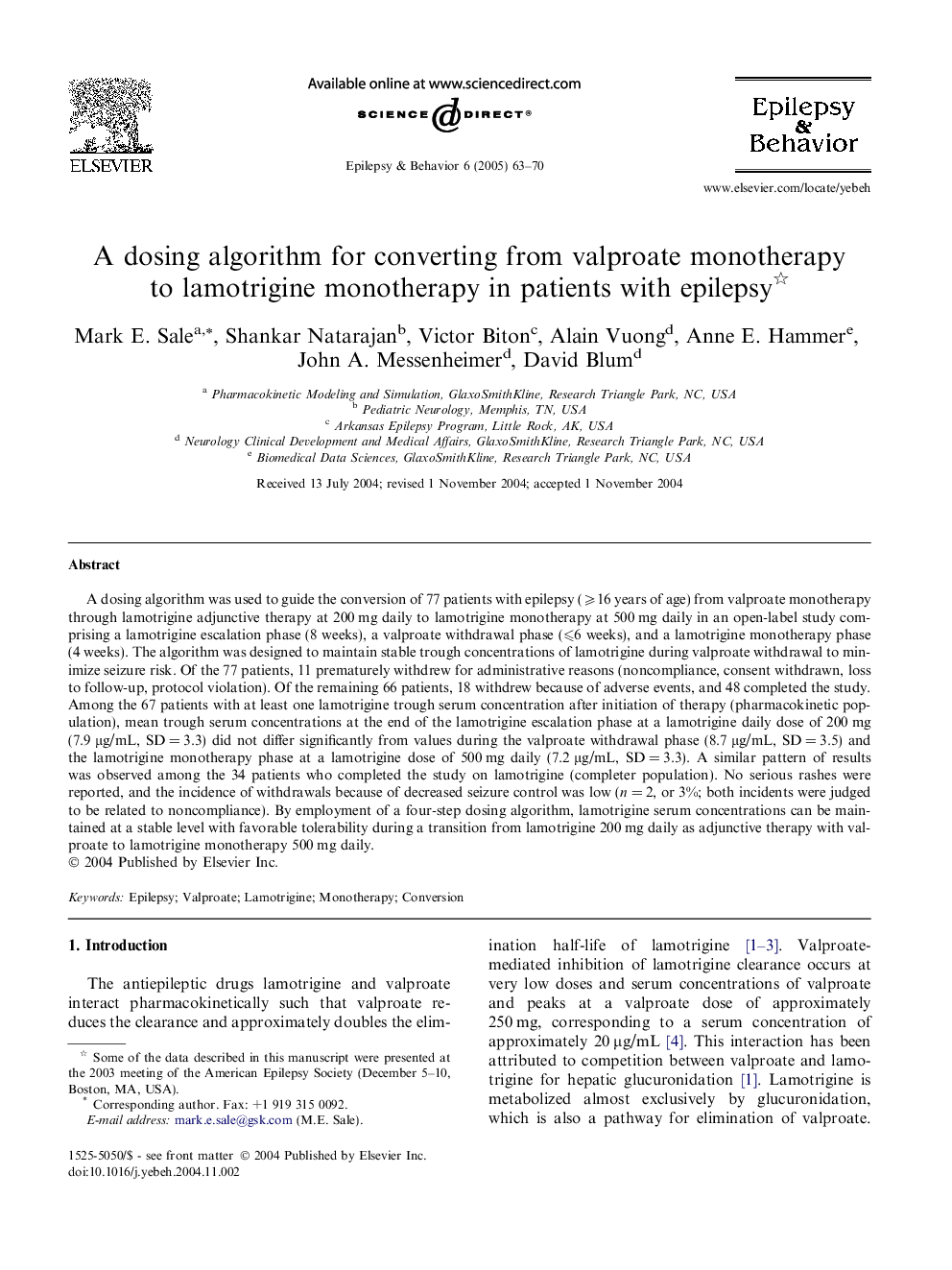| Article ID | Journal | Published Year | Pages | File Type |
|---|---|---|---|---|
| 9190490 | Epilepsy & Behavior | 2005 | 8 Pages |
Abstract
A dosing algorithm was used to guide the conversion of 77 patients with epilepsy (⩾16 years of age) from valproate monotherapy through lamotrigine adjunctive therapy at 200 mg daily to lamotrigine monotherapy at 500 mg daily in an open-label study comprising a lamotrigine escalation phase (8 weeks), a valproate withdrawal phase (⩽6 weeks), and a lamotrigine monotherapy phase (4 weeks). The algorithm was designed to maintain stable trough concentrations of lamotrigine during valproate withdrawal to minimize seizure risk. Of the 77 patients, 11 prematurely withdrew for administrative reasons (noncompliance, consent withdrawn, loss to follow-up, protocol violation). Of the remaining 66 patients, 18 withdrew because of adverse events, and 48 completed the study. Among the 67 patients with at least one lamotrigine trough serum concentration after initiation of therapy (pharmacokinetic population), mean trough serum concentrations at the end of the lamotrigine escalation phase at a lamotrigine daily dose of 200 mg (7.9 μg/mL, SD = 3.3) did not differ significantly from values during the valproate withdrawal phase (8.7 μg/mL, SD = 3.5) and the lamotrigine monotherapy phase at a lamotrigine dose of 500 mg daily (7.2 μg/mL, SD = 3.3). A similar pattern of results was observed among the 34 patients who completed the study on lamotrigine (completer population). No serious rashes were reported, and the incidence of withdrawals because of decreased seizure control was low (n = 2, or 3%; both incidents were judged to be related to noncompliance). By employment of a four-step dosing algorithm, lamotrigine serum concentrations can be maintained at a stable level with favorable tolerability during a transition from lamotrigine 200 mg daily as adjunctive therapy with valproate to lamotrigine monotherapy 500 mg daily.
Related Topics
Life Sciences
Neuroscience
Behavioral Neuroscience
Authors
Mark E. Sale, Shankar Natarajan, Victor Biton, Alain Vuong, Anne E. Hammer, John A. Messenheimer, David Blum,
